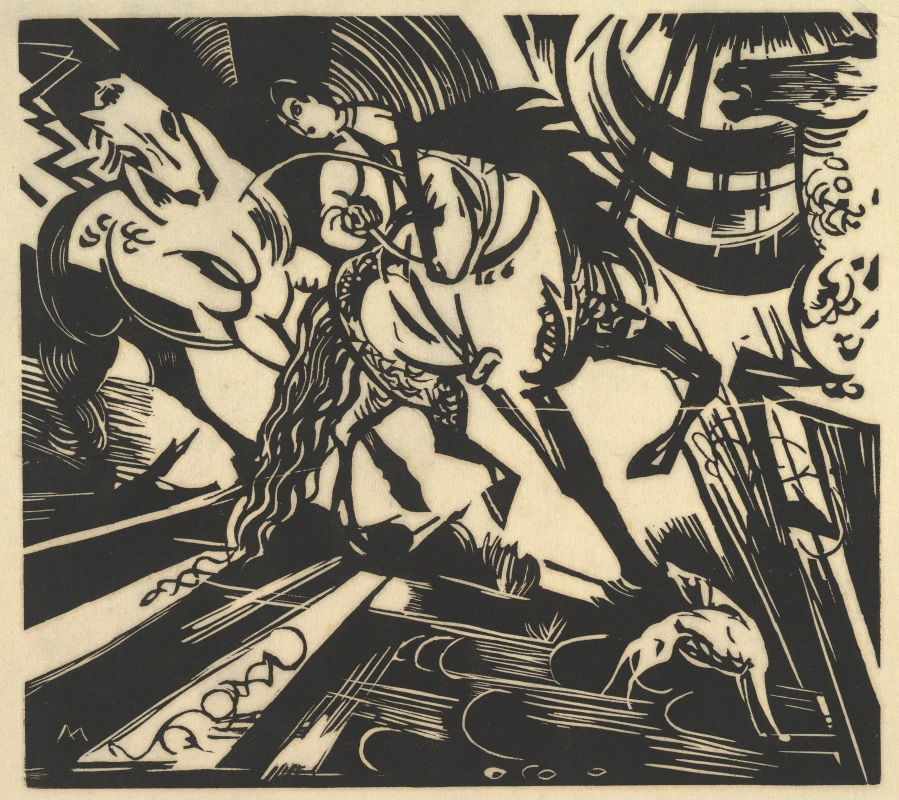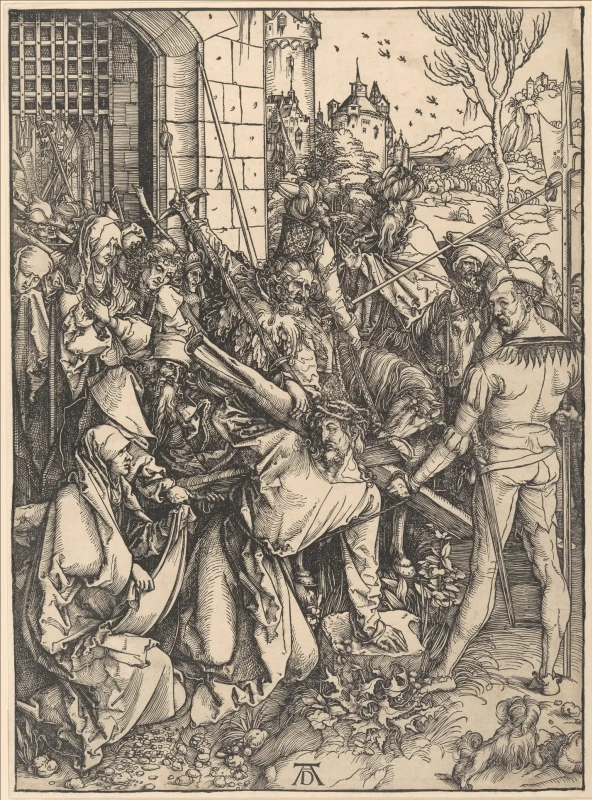The oldest technique of woodcut became one "of the great forces which were to transform mediaeval into modern life," as George E. Woodberry wrote in his 1883 book History of the Wood Engraving
. Woodcuts revolutionized not only printmaking processes, but also people’s ability to access literature and art, which only kings and the rich could previously afford.

Description of the woodcut technique. It is the process of creating a drawing on a wooden board surface using knives and other tools. It can be drawn directly on the block or transferred from a sheet of paper by painting over the back side with chalk or graphite and drawing along the outlines with a stylus, after having attached the paper to the panel. Graphite leaves traces on the surface, and the printer carefully cuts out those areas to be free of ink with a chisel or knife.
Ink is accurately applied onto the resulting relief (which is why woodcuts belong to techniques called relief printing) with a stamp pad or roller. After that, the block is transferred to a printing press, a sheet of moistened paper is placed on its surface covered with ink, and it is processed with a press (to obtain early relief prints the matrix was apparently simply pressed against the paper by hand, without worrying about the ink uniform distribution).
Ink is accurately applied onto the resulting relief (which is why woodcuts belong to techniques called relief printing) with a stamp pad or roller. After that, the block is transferred to a printing press, a sheet of moistened paper is placed on its surface covered with ink, and it is processed with a press (to obtain early relief prints the matrix was apparently simply pressed against the paper by hand, without worrying about the ink uniform distribution).
Nuances of woodcuts. Woodblocks are usually made of soft woods such as pear. The panels are naturally dried to reduce moisture levels in the wood, which prevents warping and cracking.
The size of the woodblock depends on the image but is ultimately limited by the dimensions of the printing press working area. Therefore, large engravings were printed in fragments, which were then joined together. Small blocks are less prone to cracking due to aging or printing pressure. Block thickness also matters for ease of use and wear prevention (ideal thickness is around 2.5 cm).
One of the differences between woodcut printing and other printing techniques is that the residual woodblock grain is printed on the paper.
The size of the woodblock depends on the image but is ultimately limited by the dimensions of the printing press working area. Therefore, large engravings were printed in fragments, which were then joined together. Small blocks are less prone to cracking due to aging or printing pressure. Block thickness also matters for ease of use and wear prevention (ideal thickness is around 2.5 cm).
One of the differences between woodcut printing and other printing techniques is that the residual woodblock grain is printed on the paper.
The Riding School
1913, 27×29 cm
Interesting facts about woodcut. In the mid-17th century, Japanese artists used woodblocks to print ukiyo-e ("floating world") prints. When the first printing plate was created, the original ink drawing was attached to the board and destroyed during cutting out. Then the artist marked the desired colours on the test black-and-white prints, and the carver made the required number of printing plates of one colour or tone. After that, they were pressed one by one against wet rice paper.
Vivid examples of woodcut. The most famous example of the virtuoso use of woodcuts is the Apocalypse and Life of the Virgin series by Albrecht Dürer. The artist also won a lawsuit against the Venetian Marcantonio Raimondi, who copied his boards up to the AD author’s monogram. This is the first ever lawsuit to protect intellectual property.
Vivid examples of woodcut. The most famous example of the virtuoso use of woodcuts is the Apocalypse and Life of the Virgin series by Albrecht Dürer. The artist also won a lawsuit against the Venetian Marcantonio Raimondi, who copied his boards up to the AD author’s monogram. This is the first ever lawsuit to protect intellectual property.
The woodblock technique is also used in the famous works The Great Wave off Kanagawa (1832) by Katsushika Hokusai, The Plum Park in Kameido and Sudden Shower Over Shin-Ohashi Bridge and Atake (both 1857) by Utagawa Hiroshige, which influenced Vincent van Gogh's painting style.





















